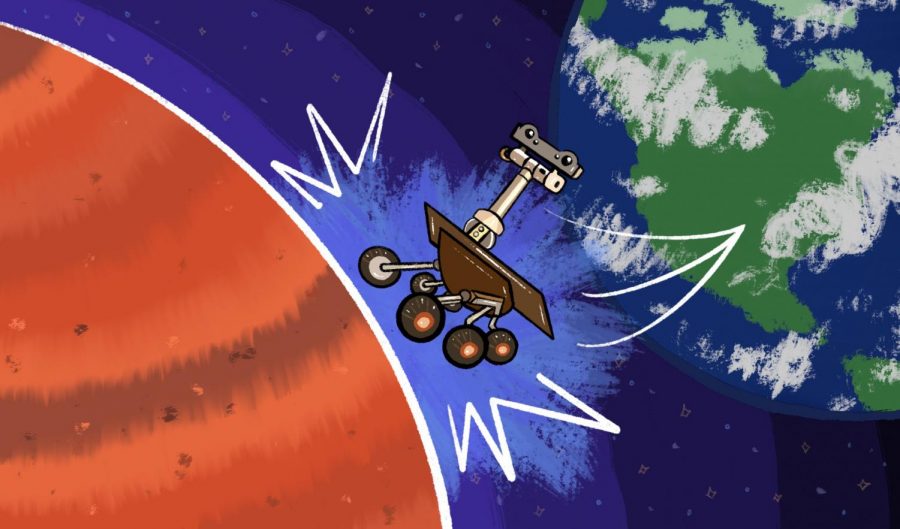Will NASA’s next mission to Mars find life?
April 1, 2020
Our closest planet with the most movies made about it is under scientific study. NASA will launch a new rover, named “Perseverance,” in order to test the land for potential life. While the most recent rover, named “Sojourner,” ended its mission on Feb. 19, 2019, because a dust storm blocked the sunlight in order to recharge its batteries, this did not stop NASA from exploring an already deemed habitable planet.
The first mission led to the discovery of another planet other than the moon, including the ability to access real-time updates through the internet. While the initial rover landed on July 4, 1997, immediate internet access was still under development, allowing ease to those with to gain updates, leaving people without waiting for the news to air. Hitting record numbers of 109 million viewers for NASA’s website and 50,000 people watching TV, this launch caused NASA’s website to ultimately stop loading rover updates for viewers briefly.
For the launch day predicted to take place between July 17, 2020, and Aug. 5, 2020, and technology is still being expanded, live coverage and internet will provide real-time updates. Broadcasting online and through live television, anyone who would like to access multiple means of such are able to receive, whether through TV or online.
NASA predicts the rover will land next to an ancient river delta near the Jezero Crater on Mars, beginning research with an area rumored to have been able to sustain life. In this area, NASA believes small microbes once lived there.
German Martinez, a professor at the University of Michigan in Ann Arbor said, “This rover is not solar-powered, it has something called Radioisotope Thermoelectric Generator that helps with converting heat to electricity.”
With direct affiliation to the construction and engineering of the rover’s Mars Environmental Dynamics Analyzer (MEDA) and Thermal Infrared Sensor (TIRS), Dr. German Martinez designed and leads the team that helps the rover track and log the environment surrounding. With this, the rover is able to log incoming solar rays, the surface thermal inertia at spatial scales, and the surface energy budget. All three are mainly important for making sure life can be sustained.
Professor Jim Bell at Arizona State University holds the position as the engineering team leader for the camera technologies on the rover. The team, Mast Cam Z, has engineered the rover to contain multiple cameras that aid in the vision for all directions. Equipped with Zoom cameras, the rover has the most recent technology offered.
“The rover is equipped with new chemical analytic systems and a core system for testing rocks,” Bell said. “The rover will not return to Earth, but the samples will.”
NASA plans to send yet another rover in the near future to gather the samples previously collected by this rover in order to ensure life is able to be sustained despite the environmental challenges Mars poses to humans.
“The air already is very thin, and no oxygen is present,” Bell said. “The dust poses a larger threat, as it can rip spacesuits and rover tires.”
With a prediction of landing on Feb. 18, 2021, and spending around 687 Earth days on Mars, there will be plenty of time for gathering and establishing confidence in developing life in the near future.


















